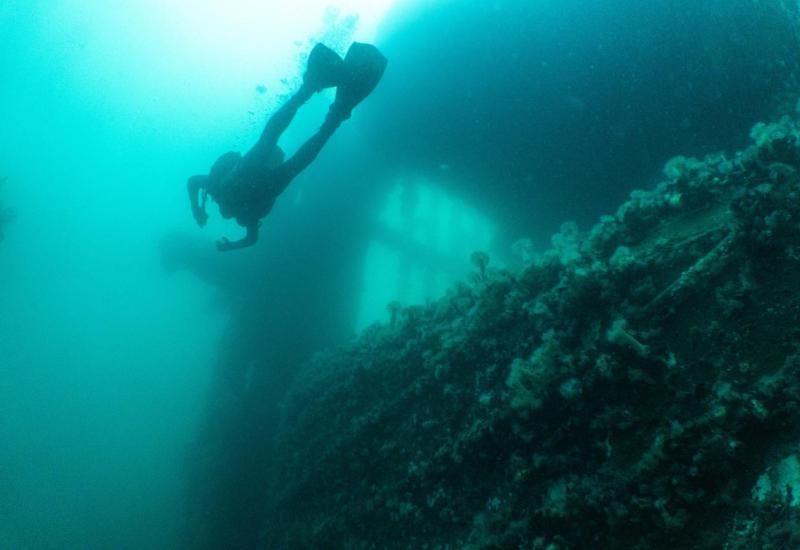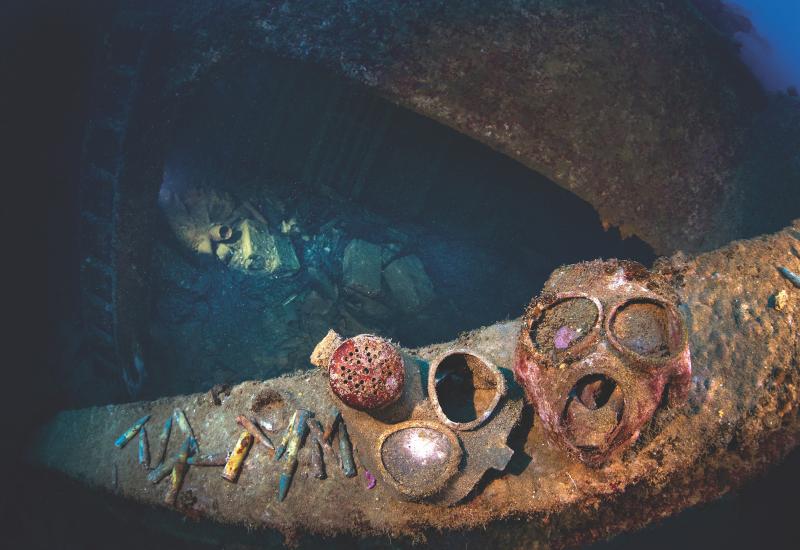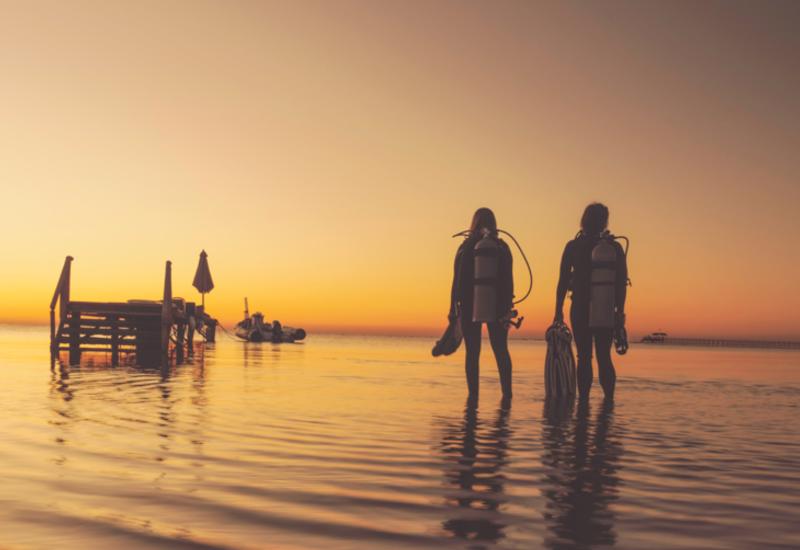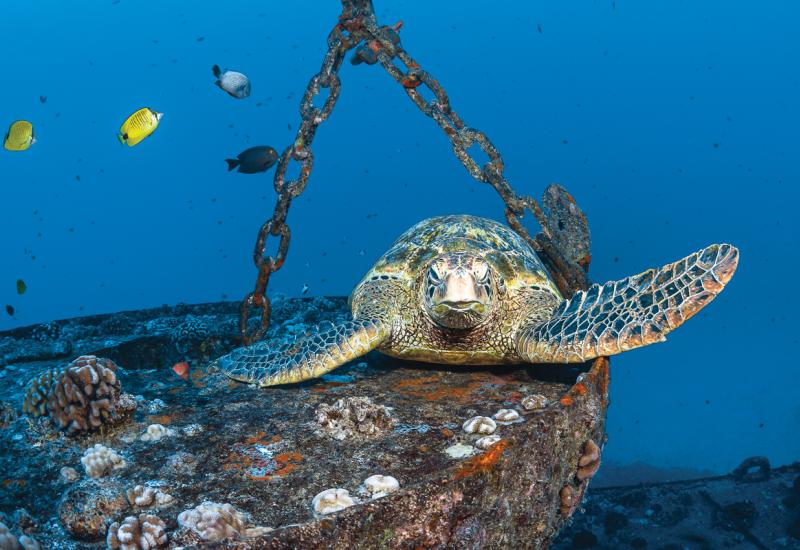Mapping History: Revolutionary War Era Wreck Explored by New York Students

Artistic rendition of a burned wreck
Shutterstock.com
British Royal Navy’s Captain Holmes Everitt preferred to see his ship on the ocean floor rather than in enemy hands at the Battle of Frigate Bay in 1782. So he set it ablaze, subsequently igniting the 160 barrels of gunpowder onboard.
How it happened:
While under French fire, Everitt's ship — HMS Solebay — was forced to sail within the half-mile range of Nevis's treacherous southwest coast.
After Solebay ran aground there, the French attacked the distressed vessel. Unable to save it, Everitt ordered the crew to abandon ship. Empty then of most everything except the 160 barrels of gunpowder, the ship's frame ignited and broke apart in the explosion.
It was Jan. 25, 1782.
Before then, Solebay had a coastal view of the American colonies’ War for Independence and the game of hot potato among imperial Britain, France and Spain for ownership of various Caribbean colonies.
The battleship now wears a dashing coat of encrusting corals, sponges and algae 35 feet underwater.

Pictured above is Professor Hewlett taking video at the dive site
Surveying the wreck:
No one had gotten a good look at Solebay since the explosion until Finger Lakes Community College professor Jim Hewlett partnered with Texas A&M professor and archaeologist Chris Cartellone to begin surveying the wreck in 2010.
Cartellone, Hewlett and 15 of his biology students trained in underwater surveying had the rare opportunity to explore the historical wreck — and yes, they dived down to see it.
“I thought [surveying Solebay] would be an excellent opportunity for the students to get practice in using their underwater survey skills,” Hewlett said. “Once we found out the historical significance of the site, then it became the goal of just being part of this exciting project.”
Students used bearing-distance relationships, circle searches, photography and video recordings, metal detecting, and the Institute of Nevis Archaeology’s magnetometer to map Solebay’s site and aid in the recovery of the ship’s artifacts.
“The debris field is spread pretty wide, but coming up to one of the bigger guns … was pretty inspiring,” Hewlett said.
Solebay’s Legacy:
The anchor and chain from the Solebay are displayed at the Alexander Hamilton Museum on Nevis, but Hewlett said they found more than that: six bigger guns — including one carronade — ballast, trigger guards and ammunition.
The project wrapped in 2013, but preservation of the artifacts continued at Texas A&M after the students surfaced from their brush with history.
Diving the Wreck Site:
Check out this footage of the team's underwater survey of the HMS Solebay, courtesy of Jim Hewlett.

Shutterstock.com
British Royal Navy’s Captain Holmes Everitt preferred to see his ship on the ocean floor rather than in enemy hands at the Battle of Frigate Bay in 1782. So he set it ablaze, subsequently igniting the 160 barrels of gunpowder onboard.
How it happened:
While under French fire, Everitt's ship — HMS Solebay — was forced to sail within the half-mile range of Nevis's treacherous southwest coast.
After Solebay ran aground there, the French attacked the distressed vessel. Unable to save it, Everitt ordered the crew to abandon ship. Empty then of most everything except the 160 barrels of gunpowder, the ship's frame ignited and broke apart in the explosion.
It was Jan. 25, 1782.
Before then, Solebay had a coastal view of the American colonies’ War for Independence and the game of hot potato among imperial Britain, France and Spain for ownership of various Caribbean colonies.
The battleship now wears a dashing coat of encrusting corals, sponges and algae 35 feet underwater.

Pictured above is Professor Hewlett taking video at the dive site
Surveying the wreck:
No one had gotten a good look at Solebay since the explosion until Finger Lakes Community College professor Jim Hewlett partnered with Texas A&M professor and archaeologist Chris Cartellone to begin surveying the wreck in 2010.
Cartellone, Hewlett and 15 of his biology students trained in underwater surveying had the rare opportunity to explore the historical wreck — and yes, they dived down to see it.
“I thought [surveying Solebay] would be an excellent opportunity for the students to get practice in using their underwater survey skills,” Hewlett said. “Once we found out the historical significance of the site, then it became the goal of just being part of this exciting project.”
Students used bearing-distance relationships, circle searches, photography and video recordings, metal detecting, and the Institute of Nevis Archaeology’s magnetometer to map Solebay’s site and aid in the recovery of the ship’s artifacts.
“The debris field is spread pretty wide, but coming up to one of the bigger guns … was pretty inspiring,” Hewlett said.
Solebay’s Legacy:
The anchor and chain from the Solebay are displayed at the Alexander Hamilton Museum on Nevis, but Hewlett said they found more than that: six bigger guns — including one carronade — ballast, trigger guards and ammunition.
The project wrapped in 2013, but preservation of the artifacts continued at Texas A&M after the students surfaced from their brush with history.
Diving the Wreck Site:
Check out this footage of the team's underwater survey of the HMS Solebay, courtesy of Jim Hewlett.










